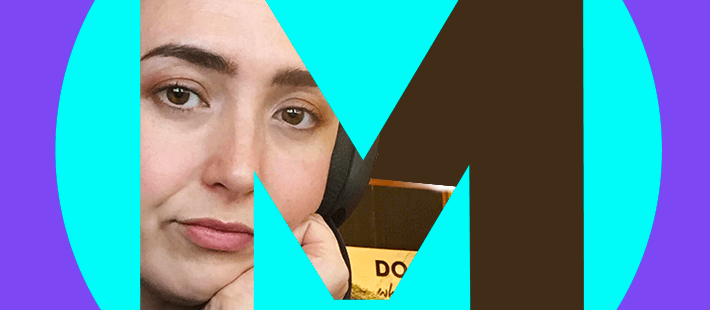In the world of web development, it can sometimes be difficult to have a clear understanding of all the various programming languages and platforms. When you are just starting out a simple explanation goes a long way.
To help you start to understand the vast landscape of web development and decide which OpenClassrooms program is right for you, let’s take a look at some of the different areas of development.
Web Development
Anyone looking to launch themselves into a career in development needs first to decide if they plan on working in developing for web browsers, such as Chrome or Firefox, or for mobile. Each of these platforms requires its own set of skills, as well as mastery of various programming languages and tools.
For those just starting out in web development for desktop browsers, OpenClassrooms’ Web Developer Program is a great way to lay solid foundations in this area. At the end of the six-month program, you’ll be awarded a certification that is equivalent to an associate’s-level diploma and benefit from our six-month job guarantee.
Clara Corazza is the Deputy Head of Code & Design at OpenClassrooms. She advises,
The Junior Web Developer program is a simplified path that enables you to become employable in only a short amount of time. Over a period of six months, we go over a wide range of programming languages, beginning with those that are easier for newcomers to the field to learn. While you won’t be able to build an entire web application by the end of the program, you will be able to construct a website and put together a strong project portfolio.
The only requirements for enrollment on the program are a decent working computer with a microphone and video capability. Clara adds,
During the first lesson, we go through the very basics of the web for those who are absolute beginners.
The course can be considered enough by itself to embark on a career in web development, or it could serve as a base to move on to studying more specialized areas within the field.
In terms of choosing which language to begin with for those who want to get into web development, Clara has this to say,
The language that you choose to study for web development should depend essentially on the employability it will offer you.
Here is something you may not have thought about. Not all companies, industries and countries use the same programming languages. For example, Python is the main language in both Spain and in the United States. Java is used almost exclusively in major industrial companies. PHP is a French creation and therefore most commonly used in France.
If you are starting to feel overwhelmed, don’t fret. We are here to help. Get in touch with one of our student advisors to gain more clarity.
Mobile development
When it comes to developing for mobile, the choice is between iOS and Android.
Apple & Google are competitors, and as such they use two very different languages. Anyone who wants to get into mobile development must simply choose which of the two platforms they prefer. Clara Corazza elaborates,
iOS developers are perhaps a little better paid, but they aren’t necessarily more career opportunities for iOS developers than there are for Android.
Both the iOS developer and Android developer programs at OpenClassrooms are one-year programs that award a qualification equivalent to a bachelor’s-level diploma and come with a six-month job guarantee.
The only requirement necessary to enroll for the iOS program is to own a Mac, as Apple have made it impossible to code for platforms that run on iOS using any other equipment. It’s an important factor that anyone thinking of choosing this career path with OpenClassrooms should keep in mind.
To weigh the pros and cons of a career in iOS versus Android check out our blog post series comparing the two here.
Front-end development
If you’ve decided that you’d like to pursue a career in web development (as opposed to mobile), you’ll then need to make a second important decision: front-end or back-end?
Front-end development is all about creating the “shop front” of a website. It is what the user will see on their screen while using the site. As Clara explains,
Front-end development is a rewarding role as you are able to see results quickly. Even at the beginning of our learning process you are able to come up with impressive creations. It doesn’t take long before you’re able to present something to clients, and it’s something that everyone understands because in the end we’re talking about interactive images, what everyone is used to seeing and using when they use the Internet. It’s a perfect job for people who like to see the results of what they have built.
It’s worth noting that there are many more jobs in front-end development than there are in mobile. Additionally, employers are more commonly looking for full-time web developers than app developers.
OpenClassrooms’ Front-end Developer Program takes an average on one-year to complete and you’ll be awarded a certification that is equivalent to a bachelor’s level diploma as well as benefit from our six-month job guarantee.
Back-end development
Behind the pretty pages of a website are back-end developers, who are responsible for creating the code that makes the website function.
Clara sheds some light on why back-end developers are essential.
Back-end developers create the structure upon which websites are based. It’s a job that involves using your sense of logic to overcome hurdles, like a puzzle, and is very rewarding for people who love problem solving. It’s something which isn’t well understood among the general public as it’s something we don’t really see.
Back-end developers create solutions that respond to the needs of a website, however it’s the work of designers and front-end developers which are visible to end users.
Front and back-end developers often work as a pair within companies. The project manager assigns work to the pair according to the needs of the client and the other team members. Learn more about the differences between Front-end and Back-end development here.
If both Back-end development and Front-end development interest you, consider working as a Full-stack developer! Learn more about Full-stack development here.
If you’d like to find out more about our web development programs and receive guidance as to which program is best for you, set a call with one of our Student Advisors and they’ll be happy to discuss your options!
It’s absolutely free to boo a call and it will help you to decide which OpenClassrooms program is right for you. Or find out more on openclassrooms.com










Hey Kate! I am Riddhi Shah and I have just popped in one of your articles and really found it interesting. Nowadays, businesses can reach a large number of customers just with mobile app to get them buy their products and services. This is the main and foremost reason as to why mobile apps are being developed constantly and people come up with most latest and creative ideas for their apps. The 4 developments in the article i.e. front-end, back-end, iOS, and Android are very best in their own way. The points that has been discussed in the post are correct and informative. I have had a great time reading this interesting article and would definitely like to read more such blog posts. I would prefer you to keep sharing such articles to let the readers like me get as much information and knowledge we want, really looking forward to reading.
Hey Kate,
bravo! It is a great list of knowledge to learn. This is very interesting and informative,
I appreciate your efforts, It will be helpful if you ad about full-stack development,
Thank You
Hi There! I’m glad you enjoyed the article. And thanks for pointing out Full-Stack! I added a link in this post to another article on our blog comparing Full-Stack to specialized development. Read it here.
Nice Article. I have read whole blog, and the information you provided is really informational.